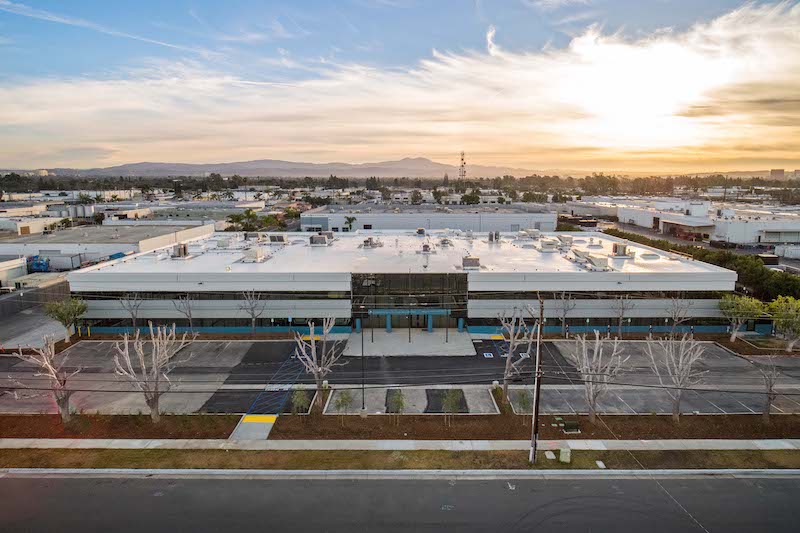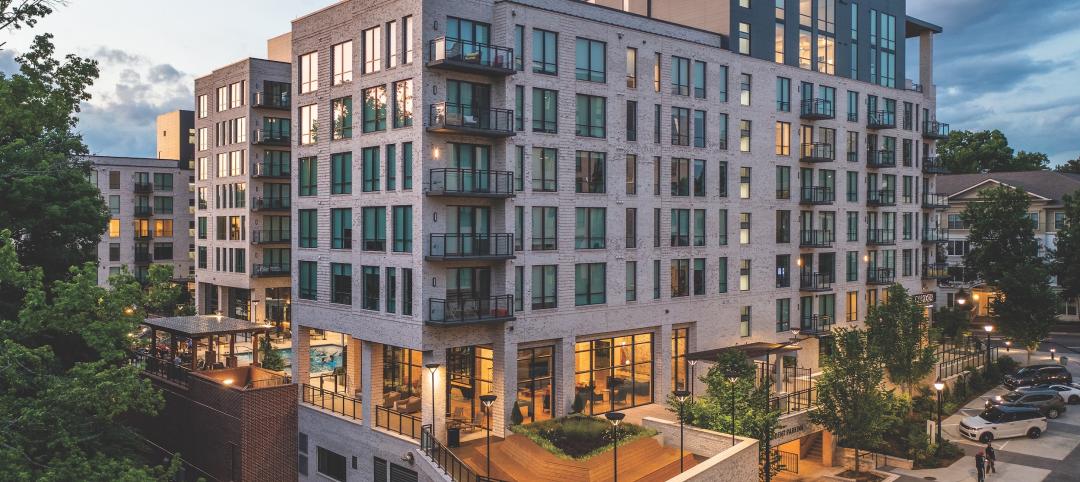On any given day, there are close to 600,000 people who are homeless in the United States, according to estimates by the Department of Housing and Urban Development. The number among those homeless that is unsheltered has been rising since 2016, and now exceeds 226,000.
Sheltering the homeless has always been a NIMBY and political hot potato; witness the brouhaha created when New York City started relocating 8,500 homeless people from many of the 60 vacant hotels they had been moved into temporarily last year because of the coronavirus pandemic. And Boise, Idaho’s Mayor Lauren McLean has named 19 citizens to a taskforce she created in response to what’s been reported as fierce neighborhood opposition to Interfaith Sanctuary’s plan to build a homeless shelter on that city’s State Street.
But the need for more homeless shelters is undoubtedly evident, growing, and national, impacting metros large and small.
A hotel previously used by the City of Austin, Texas, as a COVID-19 isolation center is set to open in August as the second bridge shelter for people experiencing homelessness in the state’s capital, where there’s been a noticeable increase in people living in outdoor tents.
In Anchorage, Ala., there’s been pressure to decommission a mass shelter by this fall, with Mayor Dave Bronson proposing a large new facility, costing $15 million, that would accommodate up to 450 people, and whose development would be informed by what’s worked (and what hasn’t) in markets like Reno, Nev., and San Francisco. And the City Council in Phoenix has just awarded two local organizations—Central Arizona Shelter Services (CASS) and Community Bridges—$8 million to open homeless shelters in west and northwest Phoenix. CASS would use its portion of that grant to buy and adapt an existing hotel.
AEC FIRMS GET INVOLVED IN SHELTER PROJECTS
This crisis would seem to be an opportunity for the AEC industry, just as the COVID-19 outbreak stimulated any number of new ideas for creating safe, emergency healthcare, education, and living spaces. One of AIA’s Small Project awards this year was The Community First! Village Micro House, designed by McKinney York Architects as a non-towable tiny house for a homeless person. It was built in Austin as part of a community of tiny houses that provides shelter to the homeless.
Earlier this week, California Gov. Gavin Newsom visited LifeMoves Mountain View, a modular housing community that opened on May 27 in Mountain View, Calif., and, as part of California’s HomeKey program, provides temporary housing and resources for up to 124 homeless people.
LifeMoves Mountain View, a transitional homeless shelter in northern California built by XL Construction, used 48 shipping containers for 100 living units. Images: Courtesy of XL Construction

The 100-unit facility was designed by Charles Bloszies, FAIA, a San Francisco-based architect. Sares Regis Group Northern California was the Project Manager. XL Construction was the GC. Other building team members were BKF Engineers (CE), ARUP (MEPF), and WEST Environmental (environmental engineer). Connect Homes (individual units), Urban Bloc (dining, bathrooms, laundry), Falcon Structures (case management and support service rooms), and Indie Dwell (family units) provided 48 shipping containers with 100 doors that created the living spaces within this 43,560-sf facility on one acre, 30% of which is dedicated to support services delivery.
“This project strikes at the core of our mission to ‘build to improve lives,’ ” says XL’s vice president Craig Ellis.
According to XL Construction, the modular structures were ready for habitation in less than 180 days from when construction commenced last December. The facility’s amenities include private locking units for each household, meeting and case management rooms, green spaces and gardens, laundry facilities, food prep and services, 19 onsite and 30 offsite parking spaces, playground, dog kennels, a children’s education center, and family services support buildings.
LifeMoves, the largest provider of interim housing and services for homelessness in Silicon Valley, expects to serve about 350 people in its new facility’s first year, more than half of Mountain View’s current homeless population.
NEW FACILITY IS A STEP TOWARD PERMANENT HOUSING

The dining hall at Yale Navigation Center in Santa Ana, Calif., one of that facility's many services. Image: JunTang Photography.com
In Santa Ana, Calif., the general contractor C.W. Driver Companies just completed the 64,000-sf Yale Navigation Center, a two-story emergency homeless shelter that will provide refuge for 275 single men, 100 single women, and 25 couples. The navigation center is set up to help homeless people transition into permanent housing and self-sufficiency.
The facility, which is an adaptive reuse of an existing warehouse-manufacturing building, features two living and sleeping options: 6x6-ft single cubicles for individuals and 8x9-ft stations for couples. The units are furnished and have storage spaces. All stations have twin-sized beds and meet ADA standards for accessibility. The facility includes women and men’s dorms, restrooms, showers, a dining hall, kitchen, outdoor patio and dining area, clinic space, and classrooms.
C.W. Driver Companies worked with the architecture firm IDS Group to complete this $25 million project. The shelter is operated by People Assisting the Homelessness (PATH). The project was spearheaded by HomeAid Orange County, a nonprofit dedicated to building new lives for families and individuals experiencing homelessness. The navigation center will provide permanent year-round 24-hour shelter, and basic needs like meals and sanitary amenities, while creating a pathway to permanent supportive housing.
Its support services include case management, employment and housing assistance, behavioral and mental healthcare support and substance abuse treatment. For security purposes, the facility will enforce strict no walk-up, no walk-out and no-loitering policies. Prospective residents must be referred to staff by outreach workers, law enforcement, or a hospital. Applicants with outstanding warrants or sex offences will not be granted access.
“Ending homelessness in Orange County is attainable with a housing-first approach,” says Jason Austin, Orange County’s director of care coordination. There are between 7,000 and 10,000 homeless in Orange County, and the Yale Navigation Center replaces an open-air bus terminal in Santa Ana’s Civic Center, which had been the city’s largest shelter.
Related Stories
Multifamily Housing | Apr 19, 2023
Austin’s historic Rainey Street welcomes a new neighbor: a 48-story mixed-used residential tower
Austin’s historic Rainey Street is welcoming a new neighbor. The Paseo, a 48-story mixed-used residential tower, will bring 557 apartments and two levels of retail to the popular Austin entertainment district, known for houses that have been converted into bungalow bars and restaurants.
Multifamily Housing | Apr 17, 2023
World's largest multifamily building pursuing ILFI Zero Carbon certification under construction in Washington, D.C.
The Douglass, in Washington, D.C.’s Ward 8, is currently the largest multifamily housing project to pursue Zero Carbon Certification from the International Living Future Institute (ILFI).
Sponsored | Multifamily Housing | Apr 12, 2023
With affordability and innovation for all: Multifamily housing ideas break barriers
With a growing need for multifamily housing solutions at all income levels, the U.S. market is seeing a proliferation of inventive projects. Alongside the creativity is a nascent move toward higher quality, if not always larger unit sizes, with offerings of better amenities both inside and outside today’s latest residential solutions.
Urban Planning | Apr 12, 2023
Watch: Trends in urban design for 2023, with James Corner Field Operations
Isabel Castilla, a Principal Designer with the landscape architecture firm James Corner Field Operations, discusses recent changes in clients' priorities about urban design, with a focus on her firm's recent projects.
Market Data | Apr 11, 2023
Construction crane count reaches all-time high in Q1 2023
Toronto, Seattle, Los Angeles, and Denver top the list of U.S/Canadian cities with the greatest number of fixed cranes on construction sites, according to Rider Levett Bucknall's RLB Crane Index for North America for Q1 2023.
Contractors | Apr 10, 2023
What makes prefabrication work? Factors every construction project should consider
There are many factors requiring careful consideration when determining whether a project is a good fit for prefabrication. JE Dunn’s Brian Burkett breaks down the most important considerations.
Affordable Housing | Apr 7, 2023
Florida’s affordable housing law expected to fuel multifamily residential projects
Florida Gov. Ron DeSantis recently signed into law affordable housing legislation that includes $711 million for housing programs and tax breaks for developers. The new law will supersede local governments’ zoning, density, and height requirements.
Multifamily Housing | Apr 4, 2023
Acing your multifamily housing amenities for the modern renter
Eighty-seven percent of residents consider amenities when signing or renewing a lease. Here are three essential amenity areas to focus on, according to market research and trends.
Resiliency | Apr 4, 2023
New bill would limit housing sprawl in fire- and flood-prone areas of California
A new bill in the California Assembly would limit housing sprawl in fire- and flood-prone areas across the state. For the last several decades, new housing has spread to more remote areas of the Golden State.
Multifamily Housing | Mar 31, 2023
EV charging stations in multifamily housing
Ryan Gram, PE, EV Charging Practice Leader at engineering firm Kimley-Horn, provides expert advice about the "business side" of installing EV charging stations in apartment and mixed-use communities. Gram speaks with BD+C Executive Editor Robert Cassidy.
















